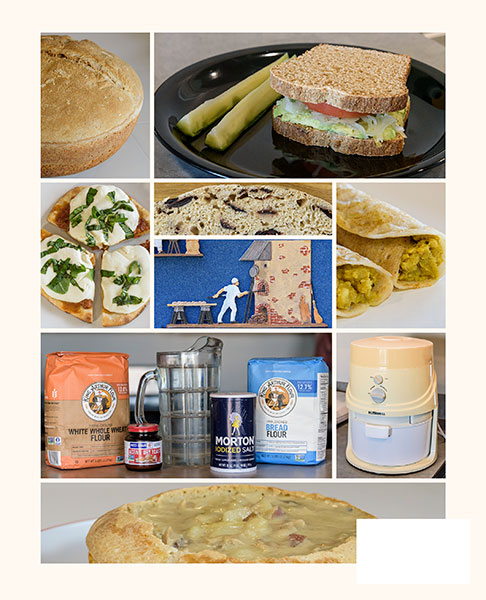Foreword by Anne L. Watson
Getting Started
Sourdough Superstitions
Who’s Afraid of Baker’s Yeast?
The Right Ingredients
Flour Fallacies
The Right Equipment
Why Weigh Your Flour?
The Right Conditions
The Right Method
The Right Setup
Brød & Taylor Proofer Setup
Instant Pot Setup
Sous Vide Setup
Testing Your Setup
Sponge Setup Test
Loaf Setup Test
Making Smart Sourdough
Smart Sourdough (recipe sketch)
Smart Sourdough (full recipe)
Starting with Salt
The Joy of Kneading
Oven Enigmas
Smart Cleanup
Testing Your Sourdough
Scaling Your Sourdough
Smart Sourdough (Medium Loaf)
Smart Sourdough (Small Loaf)
Smart Sourdough (Double Large Loaf)
Smart Sourdough (Double Medium Loaf)
Smart Sourdough (Triple Medium Loaf)
Customizing Your Sourdough
Smart Sourdough (100% Whole Wheat)
Smart Sourdough (25% Whole Wheat)
Smart Sourdough (Less Sour)
Smart Sourdough (More Sour)
Smart Sourdough (San Francisco Style)
Smart Sourdough (Mark’s Loaf)
Diversifying Your Sourdough
Smart Rye Sourdough
Smart Buckwheat Sourdough
Smart Barley Sourdough
Smart Barley Pumpernickel
Smart Tomato Basil Sourdough
Smart Buckwheat Walnut Sourdough
Smart Mediterranean Sourdough
Smart Middle Eastern Sourdough
Smart Raisin Sourdough
Smart Chocolate Cherry Sourdough
Baking in the Round
Making Sourdough Bread Bowls
Grinding Your Own Flour
NutriMill Tips
Making Sourdough Pizza
Smart Sourdough Pizza Dough
Mark’s Sourdough Skillet Pizza
Making Sourdough Pancakes
Smart Sourdough No-Rise Pancakes
Smart Sourdough Malt Pancakes
Smart Sourdough Buckwheat Pancakes
Smart Sourdough Rice Pancakes
Smart Dosa
Mark’s Masala Dosa
Beyond Sourdough
Frequently Asked Questions
Sourdough vs. Salt-Rising


